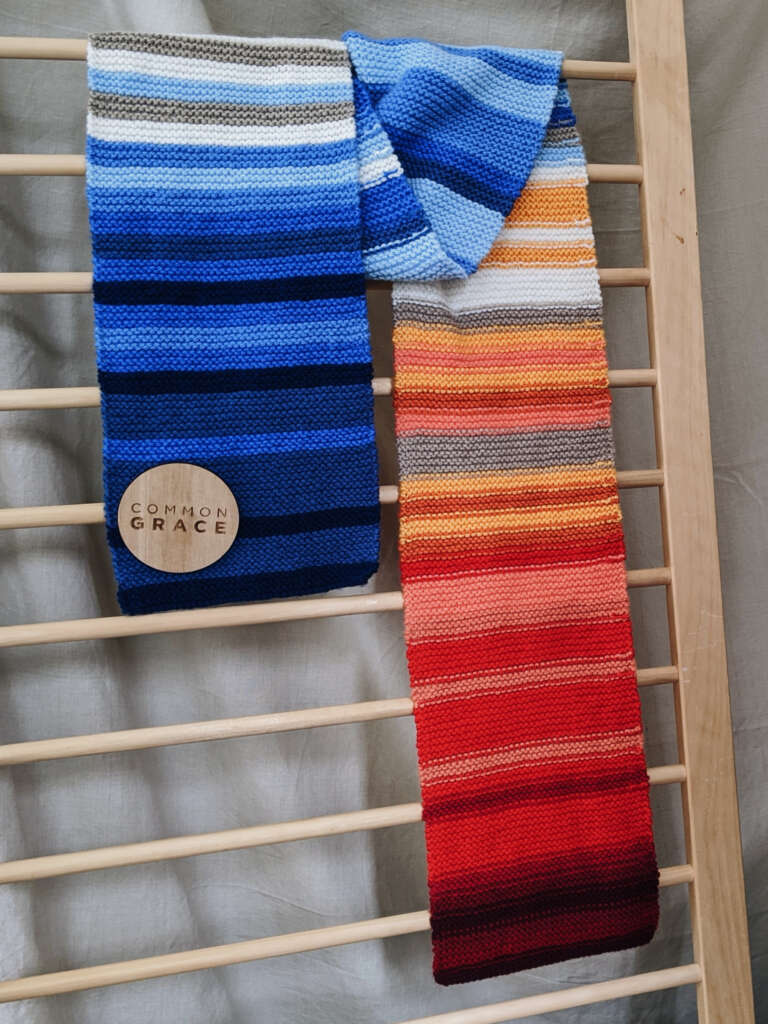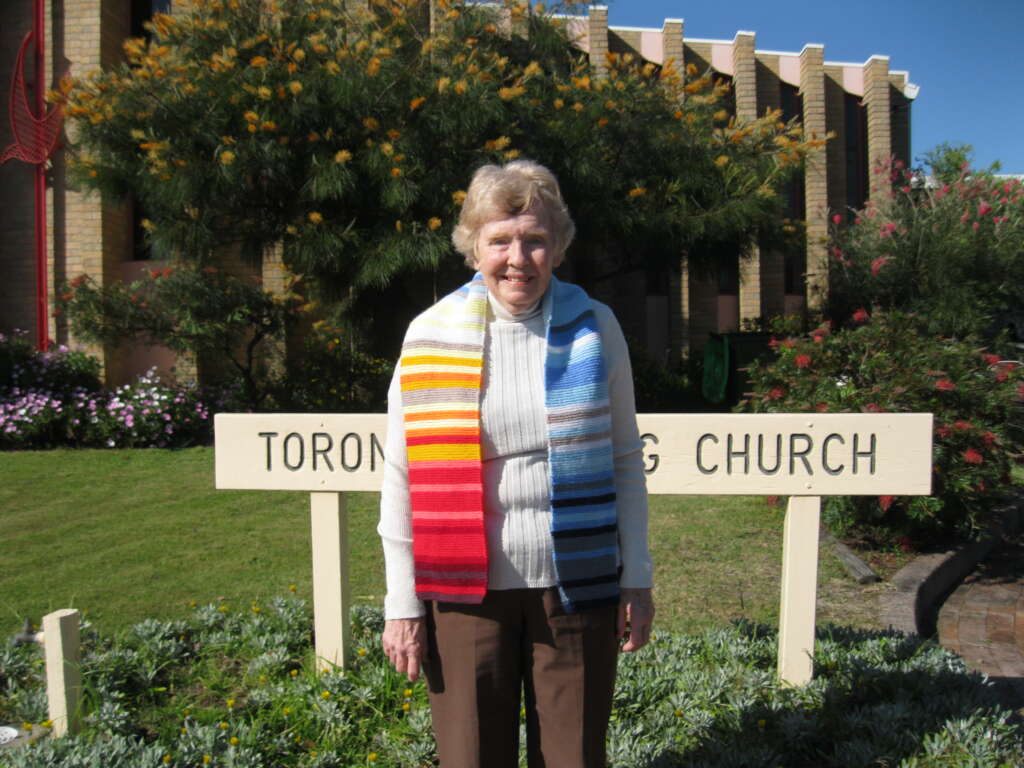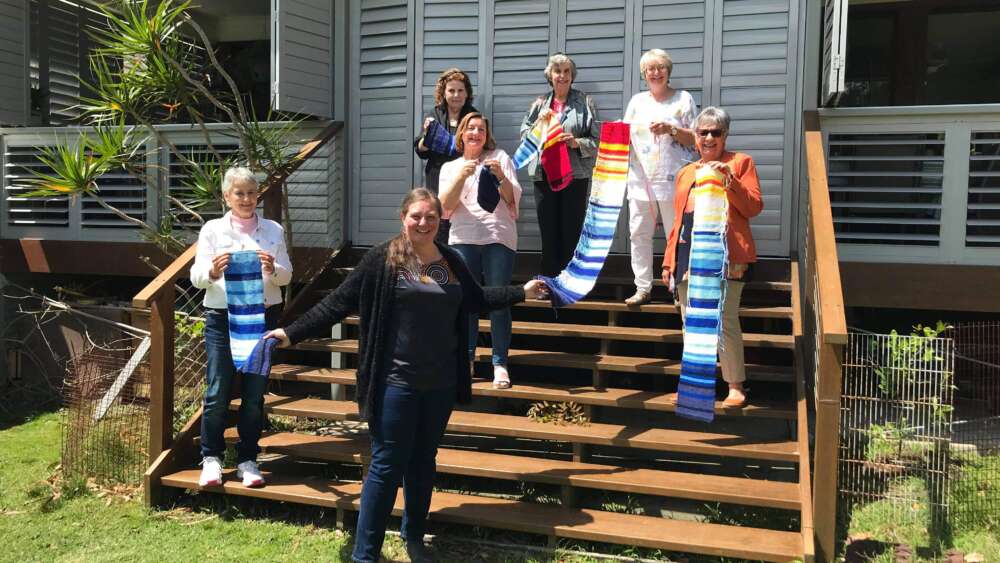Handknitted scarves tell story of a warming planet
Climate action is the fashion next winter
Brooke Prentis, CEO of Christian social justice organisation Common Grace, sports a “hauntingly beautiful” scarf around her neck as she chats with Eternity over Zoom. She holds it out to show the bands of colour weaving their way from placid blue at one end, to searing red at the other.
This is no ordinary scarf, she explains. It is in fact a climate graph. Each stripe depicts one year in the history of global climate change over the past 101 years. Starting from 1919 – the cool “blue end” – the graduation of colour shows the rise in average global temperatures until 2019.
“It’s a very visual representation of what’s happening each and every day,” says Prentis.
“You can see that there’s a major transition [in temperature] each decade. I turned 40 years old this year, so for the last four decades, I’m here in the reds.
“We’ve lived through this, but then you think about the generations yet to come and what’s not knitted into the scarf.
“We need to think about those future generations.”
The scarf pattern is based on the #ShowYourStripes graph created by UK climate scientist Professor Ed Hawkins, and the idea was inspired by a five-metre climate scarf knitted by members of a UK Women’s Institute. The climate data was supplied by Aussie “ecotheologian” Mick Pope.

Common Grace’s climate action scarf
But as well as being a visual aid to climate change science, Common Grace is using the scarf as a political statement.
At the moment, more than 600 knitters across Australia are working on identical scarves to the one Prentis wears, as part of Common Grace’s “Knit for Climate Action” campaign.
Common Grace will collect all scarves by the end of March 2021, and then gift them to Senate leaders, MPs and church leaders in winter 2021 (many of whom will be nominated by knitters). The aim of this creative campaign is to highlight “the need for a bold and credible national plan to tackle the climate crisis”.
“The deep prayer and hope is that on one of the sitting days of Parliament in the winter months of 2021, that every parliamentarian is wearing the scarf,” says Prentis.
“… We hope that our parliamentarians will take just one simple action in wearing this scarf for creation and climate justice.
“Obviously, we need much more action, but this is a start. It’s a way that they can say ‘this is our community who we represent, and this is what we’re passionate about. And we want to help bring a change for our present, but also for the future so that we can have a safe climate for all.'”
Common Grace has so far received more than 40 completed scarves, with many knitters now moving on to their third or fourth scarf. So, it’s anticipated the campaign will well exceed the aim of having 101 scarves ready to be gifted next winter.

A knitter proudly shows her scarf.
Along with making an impact on those who receive the scarves, it seems the campaign also impacts the knitters.
“For many knitters, particularly those who have not participated in creation and climate justice before, I’ve been told this is quite a confronting process,” says Prentis.
Referring to the link between the changing colour of the wool and temperature increase, she explains, “Many have been struggling with, ‘Oh, no, I don’t want to go to the reds. I want to stay with the blues!’ But this is the reality we’re living.”
As hoped, Prentis says people’s involvement in the campaign is already sparking “individual transformation” around climate action.
“Then, because they’ve been so impacted, they’re having conversations about it with their own families, their churches and faith communities,” she says.
“They’re really investing in this project. It’s their time and their resources in buying the wool.
“But, apart from the scarves, other beautiful things are being produced out of that, like forming knitting parties and groups; people in churches being able to gather together to knit; grandmothers teaching their grandchildren how to knit; and men’s knitting groups taking place.”
“Even people who can’t knit, like myself, can still support the campaign.” – Brooke Prentis
And it’s not only those clicking the needles who are joining in.
“Even people who can’t knit, like myself, can still support the campaign,” says Prentis.
“The non-knitters are donating to help the campaign keep going and cheering on the knitters. And we’re all coming together in prayer and in other ways to take action for creation and climate justice.”
The breadth of people involved in the campaign, and its creativity, demonstrates how Prentis believes faith communities and churches should address the issue of climate justice.
“It’s less about protest and more about bringing social change and the change that’s required.”
“In any of the great social justice movements, we need our poets and our songs and our creativity. So the scarf is one way of participating in that.
“And it’s not just our parliamentarians. We have to look at each and every one of us, as peoples coming together … In all the different roles that we play in society, it’s up to each of us …
“We do want to imagine a different Australia – one that does have a safe climate. And so I hope that this scarf sparks, through its haunting beauty and its striking nature, the need to take more action.”


